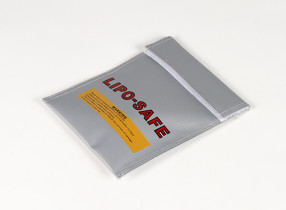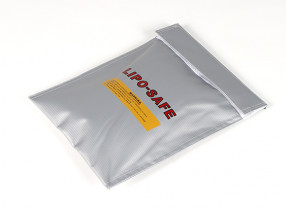Introduction
Lithium Polymer (LiPo) batteries have revolutionized the RC world, offering high performance and energy density. However, to maximize their lifespan and ensure safety, it's essential to understand and follow key practices like using a lipo battery bag, maintaining proper lipo storage voltage, and observing safe lipo discharge voltage levels. This article, brought to you by HobbyKing, dives deep into how to manage LiPo batteries safely and effectively, whether you're an enthusiast or a beginner.
1. What is a LiPo Battery?
A LiPo (Lithium Polymer) battery is a rechargeable power source used in RC hobbies, drones, and various electronic devices. These batteries are favored for their high discharge rates, lightweight structure, and ability to deliver substantial power.
2. The Importance of a LiPo Battery Bag
A lipo battery bag is a fireproof storage pouch designed to reduce the risk of fire during charging, storage, or transport. HobbyKing strongly recommends using a high-quality lipo battery bag to prevent accidents.
- Benefits of Using a LiPo Battery Bag:
Fire containment: Limits damage in case of battery failure.
Portability: Makes battery transport safer and easier.
Compliance: Meets safety standards often required at RC tracks and events.

3. Understanding LiPo Storage Voltage
One of the most overlooked aspects of LiPo battery care is proper storage. Incorrect voltage during storage can drastically reduce the battery’s lifespan.
What is the Ideal LiPo Storage Voltage?
The optimal lipo storage voltage is around 3.7V to 3.85V per cell. At this voltage range, the battery chemistry is most stable, minimizing the risk of swelling, degradation, and even combustion.
- Storage Tips from HobbyKing:
- Never store a LiPo battery at full charge (4.2V per cell) or completely empty (below 3.3V per cell).
- Use a balance charger with a storage function.
- Store in a cool, dry place using a lipo battery bag.
4. LiPo Discharge Voltage Guidelines
Just as important as storage, monitoring your lipo discharge voltage during use ensures you don't damage the cells or reduce battery capacity.
- Safe LiPo Discharge Voltage Range:
- Minimum safe discharge voltage: 3.0V per cell.
- Recommended cutoff voltage: 3.3V to 3.5V per cell.
Going below 3.0V can cause irreversible damage to the battery, making it unsafe or unusable. HobbyKing products often include built-in cutoff features to help users avoid over-discharging.
5. Charging LiPo Batteries Safely
Charging is the most critical phase in the LiPo lifecycle. Always use a high-quality balance charger like those available at HobbyKing.
- Charging Safety Guidelines:
- Always charge in a lipo battery bag.
- Never leave batteries unattended while charging.
- Set correct cell count and charge rate (1C is standard).

6. Storage Best Practices for Long-Term Battery Health
Storing batteries the right way ensures long-term performance and safety.
- HobbyKing’s Storage Recommendations:
- Store batteries at 50% charge (storage voltage range).
- Use lipo battery bags to isolate and protect each battery.
- Label batteries with last charge date and condition.
7. Common LiPo Battery Mistakes to Avoid
Avoiding simple errors can greatly enhance the lifespan and safety of your LiPo batteries.
- Frequent Mistakes:
- Storing fully charged or drained batteries.
- Over-discharging during flight.
- Ignoring puffed or swollen cells.
- Mixing old and new batteries in series.

8. HobbyKing’s Trusted LiPo Battery Accessories
At HobbyKing, we not only offer high-quality LiPo batteries but also provide essential safety gear like:
- Certified lipo battery bags.
- Smart chargers with storage and safety modes.
- Voltage alarms and balance boards.
Conclusion
Properly using tools like a lipo battery bag, maintaining correct lipo storage voltage, and observing safe lipo discharge voltage can dramatically extend your battery’s lifespan and ensure your safety. HobbyKing is committed to educating and equipping RC hobbyists with the best tools and knowledge in the industry. Whether you're new to RC or an experienced flyer, these practices will keep your equipment running smoothly and safely.
